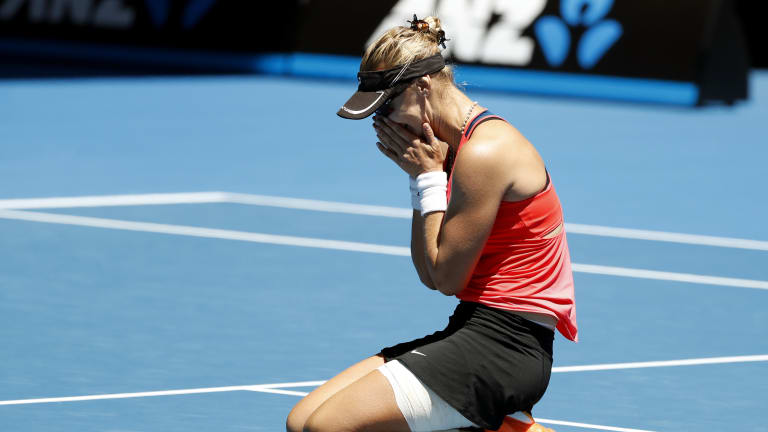Federer-Nadal XXXV earned its Roman numerals. It was, in my estimation, the fourth best of their 35 matches: a little better than their five-set 2009 Australian Open final, which it resembled for certain stretches, but not quite as good as their five-set 2007 Wimbledon final, which was resembled in the way it ended. In the fifth set of this one, Federer was able to break out of a long-term negative dynamic by finally using his one-handed backhand to stand up to Rafa’s topspin. Rafa, on the other hand, succumbed to his own long-term negative dynamic: He played well enough to make a comeback and well enough to take a lead, but not well enough to hold that lead. Still, the good news for tennis is that these two popular players have allayed any doubts about their future viability. Nadal reached his first Slam final in three years, while Federer won his first major in five. Since 2012, the question I’ve been asked more often than any other is, “Can Federer win another Slam?” Now that he’s done it at 35, no one needs to ask that question ever again. For as long as he’s on tour, the answer will always be yes.
The 2017 Aussie final reversed the result of the 2009 final, and so did the trophy ceremony. Eight years ago, it was Nadal who consoled Federer; this year it was Federer who returned the favor. “I would have been happy to accept a draw with Rafa,” Federer said, in an echo of the Williams sisters from the previous night. Federer and Nadal kicked off the Big Four era together a decade ago, but for years their fans have been divided. On this night, when they met more as friends than rivals, it felt like the old Big Four wars—between players and fans—were behind us, at least for a moment. We could use that moment to celebrate them together.
As Rafa, Roger, Venus, Serena, Mirjana, Mischa, Andreas and others showed us in Melbourne, sometimes getting older really can be a beautiful thing to watch.





